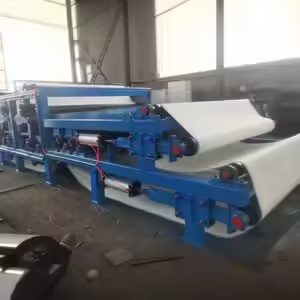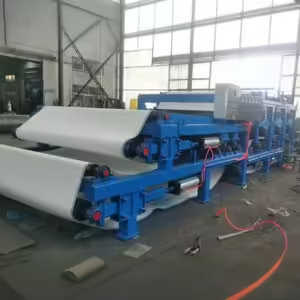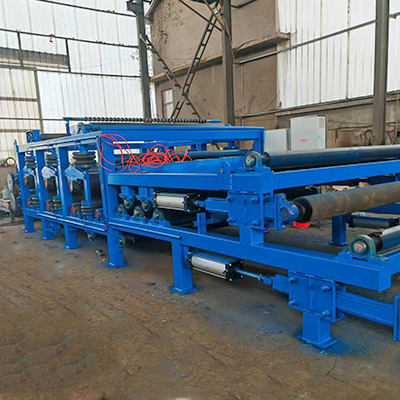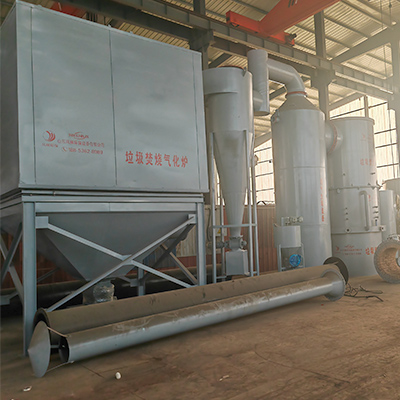Welcome to My Blog! 🌟
I’m so glad you’re here! Before we jump into the exciting content, I’d love for you to connect with me on my social media platforms. It’s where I share extra insights, interact with our amazing community, and post regular updates. Here’s how you can join the conversation:
📘 Facebook: Follow me on Facebook for more updates
Now, let’s dive into the journey ahead. I hope you find everything here both engaging and valuable. Together, let’s explore, learn, and grow! 🚀
Table of Contents
Introduction

In construction, landscaping, and industrial applications, the quality of sand can significantly influence the final product. One essential step in ensuring sand quality is the process of washing sand. This process removes impurities such as clay, silt, dust, and unwanted particles, resulting in clean, durable, and performance-enhancing sand. Washing sand not only improves the strength and longevity of construction materials but also contributes to better bonding in concrete, clearer filtration in water treatment, and cleaner surfaces in sandblasting.
Whether you’re an industry veteran or new to handling sand-based projects, understanding the washing sand process is essential. Clean sand enhances product reliability, reduces wear and tear on machinery, and ensures compliance with environmental and industry standards.
In this article, we will explore three expert tips to optimize your washing sand process, discuss various techniques and equipment, and answer common questions. You’ll also find a comparative table of sand washing methods to help choose the most suitable solution for your needs.
Tip 1: Choose the Right Equipment for Washing Sand
Choosing the right equipment for washing sand is the foundation of any successful sand washing operation. Different sand types, contamination levels, production scales, and site conditions all influence the optimal equipment choice. Investing in appropriate machinery not only improves washing efficiency and sand quality but also minimizes operational costs and environmental impact.
Common Types of Sand Washing Equipment
Wheel Washers
Wheel washers, also known as wheel scrubbers, are widely used in the industry due to their simple design and effective performance for light to medium contamination. These machines use a rotating wheel to lift and wash sand, removing dirt, dust, and other light impurities. They are typically energy-efficient, easy to operate, and require low maintenance. Wheel washers work best with medium to coarse sand particles where heavy contamination is minimal.
Screw Washers
Screw washers employ an Archimedes screw to agitate sand while simultaneously washing and dewatering it. They are well-suited for handling coarser sand or larger volumes of material. These washers can remove clay, silt, and other impurities more aggressively than wheel washers. Because of their design, screw washers excel in continuous operations and are often used in larger sand production plants.
Hydrocyclones
Hydrocyclones are specialized devices designed to separate fine particles from sand slurry using centrifugal force. They are essential for processing fine sand fractions and are often used in high-precision industrial applications such as foundries, glass manufacturing, and concrete production. Hydrocyclones provide precise control over particle separation, allowing producers to tailor the sand’s size distribution and purity.
Log Washers
Log washers consist of a rotating shaft with paddles that scrub sand vigorously. This equipment is particularly effective in removing stubborn contaminants such as clay, sticky organic materials, and tough sediments that adhere to sand particles. Log washers are often deployed in deposits where sand is heavily soiled or requires deep cleaning.
Vibratory Screens with Spray Bars
These systems combine screening and washing functions. Vibratory motion separates sand by size while spray bars wash away impurities. Such modular setups offer flexibility and are frequently used as a pre-washing or grading stage before more intense washing processes.
Key Factors in Equipment Selection
- Sand Particle Size and Distribution: Fine sands with high silt content need equipment capable of delicate handling, such as hydrocyclones, to prevent product loss and damage. Coarser sands can tolerate heavier scrubbing.
- Type and Level of Contamination: Clay-heavy or organic-laden sand demands aggressive washers like log washers to achieve acceptable cleanliness.
- Water Supply and Quality: High water-consuming machines need appropriate drainage, recycling, or treatment facilities. Regions with water scarcity benefit from systems designed for water reuse.
- Production Volume and Scalability: Large-scale operations require robust, continuous-running equipment with minimal downtime, while smaller projects can utilize simpler machines.
- Energy Efficiency and Operating Costs: Energy consumption is a significant factor in operational expenses. Choosing energy-efficient washers with optimized motor designs can reduce long-term costs.
- Maintenance and Spare Parts Availability: Easy maintenance and availability of replacement parts minimize downtime and repair costs.
Investing in the correct equipment tailored to your washing sand operation ensures optimal performance, consistent product quality, and economic viability.
Tip 2: Optimize Water Usage in the Sand Washing Process

Water is an essential element in the washing sand process, but it can also be one of the most significant operating expenses and environmental concerns if not managed properly. Efficient water use reduces costs, minimizes environmental footprint, and enhances washing outcomes.
Water Recycling Systems
Modern sand washing setups often include water recycling systems that collect, filter, and reuse water within the washing cycle. This approach:
- Minimizes fresh water consumption.
- Reduces discharge volumes.
- Lowers environmental impact.
Tips for Efficient Water Usage
- Monitor and Control Flow Rates: Adjust water flow to balance cleaning efficiency and minimize excessive consumption. Too little water results in insufficient washing; too much leads to waste.
- Use Nozzles Optimized for Spray Coverage: Spray bar nozzles should distribute water evenly with enough pressure to dislodge contaminants without overusing water.
- Implement Automated Water Management Controls: Sensors and control systems can regulate water flow based on load, sand moisture content, or contamination level.
- Design Efficient Drainage and Recovery Layouts: Proper site grading and piping reduce water losses and facilitate recycling.
- Regularly Maintain Water Treatment Equipment: Clean filters and pumps ensure consistent water quality and system reliability.
By combining these strategies with advanced recycling equipment, washing sand operations can achieve both operational excellence and environmental compliance.
Tip 3: Maintain Regular Cleaning and Inspection Routines
Clean and well-maintained equipment is key to a successful washing sand operation. Regular maintenance reduces breakdowns, enhances performance, and prolongs equipment life.
Routine Maintenance Activities
- Daily Inspection: Check for wear, tear, and build-up in washers, screens, and pumps.
- Lubrication Schedule: Keep moving parts adequately lubricated.
- Replace Worn Parts: Don’t wait for parts to fail—replace them at first signs of wear.
- Clean Water Jets and Screens: Clogged nozzles reduce cleaning efficiency.
Monitoring Sand Quality
Frequent testing of washed sand ensures that your output meets required standards. Testing includes:
- Silt content analysis
- Moisture content measurement
- Grain size distribution
- Organic matter assessment
Table: Comparison of Washing Sand Techniques
| Method | Best For | Water Usage | Maintenance Needs | Output Quality |
|---|---|---|---|---|
| Wheel Washers | Light dirt removal | Low | Low | Medium |
| Screw Washers | Heavy-duty cleaning | Medium | Moderate | High |
| Hydrocyclones | Fine sand separation | High | Moderate | Very High |
| Log Washers | Sticky clay and tough debris | High | High | High |
| Vibratory Screens | Pre-wash and grading | Low | Low | Medium |
Benefits of a Well-Planned Washing Sand Strategy

Implementing expert tips for washing sand not only improves sand quality but also adds significant value to operations. Benefits include:
- Enhanced Product Quality: Better sand equals better concrete, mortar, or filters.
- Lower Equipment Downtime: Clean sand reduces abrasion on equipment.
- Eco-Friendliness: Reduced water use and lower waste output.
- Regulatory Compliance: Cleaner sand helps meet construction and environmental standards.
- Operational Efficiency: Optimal use of resources and minimal waste.
Conclusion
Washing sand is more than just a cleaning process—it’s an investment in quality, efficiency, and sustainability. By selecting the right equipment, optimizing water use, and performing routine maintenance, industries can unlock the full potential of their sand operations.
As environmental regulations tighten and demand for higher-quality materials increases, adopting a proactive approach to washing sand is no longer optional—it’s essential. The tips shared in this article offer a solid starting point for professionals looking to upgrade their operations.
Moving forward, continuous innovation in washing technologies and water recycling systems will further enhance the economic and environmental performance of sand washing operations.
FAQ
What is the purpose of washing sand?
Washing sand removes unwanted particles like clay, dust, and organic materials to enhance the quality and functionality of sand for various applications.
Can I use untreated sand for construction?
While untreated sand may work for minor applications, it often contains impurities that weaken concrete and compromise durability. Washing sand is crucial for professional-grade outcomes.
How much water does a typical sand washing system use?
Water usage varies depending on the equipment and method used. Systems with recycling features significantly reduce water consumption.
Is washing sand environmentally friendly?
It can be, especially when paired with water recycling systems and proper waste management practices. Clean sand also reduces the need for chemical additives in concrete mixes.
What’s the best method for small-scale sand washing?
Wheel washers or vibratory screens are ideal for small projects due to their compact size, low water consumption, and simple operation.
How often should equipment be inspected?
Ideally, you should conduct daily visual inspections and schedule detailed maintenance weekly or monthly based on usage intensity.
What types of sand benefit most from washing?
All types can benefit, but washing is especially important for river sand, manufactured sand, and reclaimed construction sand that may carry contaminants.






